Introduction
Radishes are a low-calorie root vegetable packed with essential nutrients like vitamin C, fiber, and minerals, making them an appealing option for human consumption. However, the dietary requirements of guinea pigs differ significantly from our own. These herbivorous creatures have delicate digestive systems that necessitate a balanced and specific diet to maintain their health. When it comes to radishes, there are certain considerations to keep in mind.
While guinea pigs can indeed eat radishes, it should be in moderation and as an occasional treat rather than a regular part of their diet. Radishes are quite high in vitamin C, which is essential for guinea pigs as they cannot produce this vitamin on their own. Nonetheless, excessive consumption of radishes can lead to digestive upset due to their high water content and the potential for gas formation. Therefore, it’s crucial to introduce radishes slowly into your guinea pig’s diet and monitor their reaction closely.
In the following sections, we’ll explore the benefits and risks of feeding radishes to guinea pigs in more detail, providing you with the information you need to make informed decisions about incorporating this root vegetable into your pet’s menu.
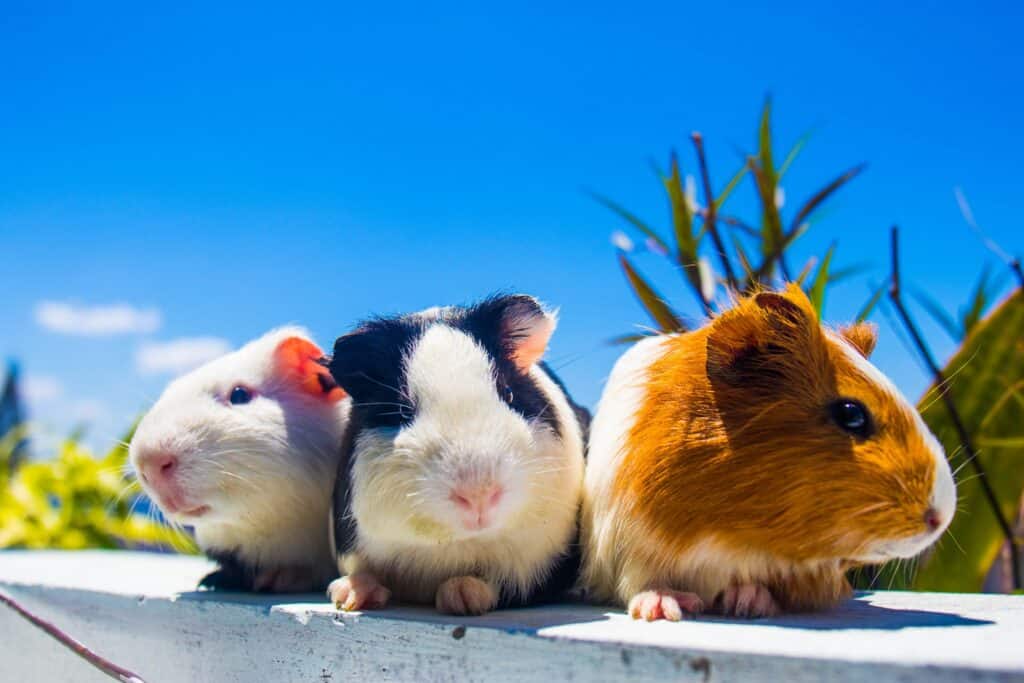
Is radish safe for guinea pigs?
Yes, guinea pigs can eat radishes in moderation as part of a well-balanced diet. Radishes are a good source of vitamin C, which is essential for guinea pigs, as they are unable to synthesize their own vitamin C. They also contain small amounts of other nutrients such as fiber, potassium, and folate.
Radishes are a common vegetable found in many households, known for their crisp texture and peppery flavor. While they can be a healthy addition to a human diet, guinea pig owners often wonder if radishes are safe for their beloved furry companions. The answer is yes, but with important caveats.
Radishes are indeed safe for guinea pigs to eat, but they should be considered a treat rather than a staple in their diet. These small rodents have specific dietary requirements that must be met to ensure their well-being. Radishes can provide some nutritional benefits for guinea pigs, primarily in the form of vitamin C, fiber, and certain minerals. Vitamin C, in particular, is crucial for guinea pigs because they cannot synthesize it themselves. Radishes can help supplement their vitamin C intake, which is essential for their overall health.
However, it’s essential to exercise caution when offering radishes to guinea pigs. These root vegetables have a high water content, which can lead to digestive issues if consumed in excess. Guinea pigs have sensitive stomachs, and sudden changes or excessive intake of watery vegetables can result in diarrhea or other gastrointestinal problems. To mitigate this risk, introduce radishes gradually into their diet and monitor their response. Start with a small portion and observe how your guinea pig reacts before deciding whether to incorporate radishes more frequently.
Can guinea pigs eat radishes and celery?
These should be fed to your piggy rarely as they contain oxalic acid. Radish leaves are high in calcium, so you should be careful with these as too much calcium can lead to bladder stones.
Nutritional Value: Radishes are a good source of vitamin C, which is vital for guinea pigs, as they cannot produce this vitamin naturally. Vitamin C helps maintain their overall health, boost their immune system, and prevent scurvy. Additionally, radishes contain fiber, which aids in digestion, and small amounts of other vitamins and minerals like potassium and folate.
Portion Control: While radishes have some nutritional benefits, they should be considered a treat rather than a staple in your guinea pig’s diet. Too many radishes can lead to digestive upset due to their high water content and moderate levels of oxalic acid, which can interfere with calcium absorption. Therefore, offer radishes in small quantities, and make sure they are fresh and free from pesticides.
Variety Matters:Guinea pigs thrive on a varied diet, so it’s crucial to mix radishes with other fresh vegetables, such as leafy greens, bell peppers, and carrots. This variety ensures they receive a broad spectrum of nutrients without overloading on any one type of food.
Can rabbits and guinea pigs eat radishes?
Radish – Radish is quite spicy for rabbits and guinea-pigs and can irritate the respiratory tract so should only be offered in small quantities. However, it is useful as a de-wormer and contains other useful phytochemicals.
Rabbits and guinea pigs are popular pets known for their adorable appearances and unique dietary requirements. Providing a balanced and nutritious diet is crucial to ensure their health and well-being. When it comes to introducing new foods, such as radishes, into their diets, it’s essential to exercise caution and understand the potential benefits and risks involved.
Radishes are a root vegetable that belongs to the Brassicaceae family. They come in various shapes and sizes, but they are generally known for their crisp texture and peppery flavor. While humans often enjoy radishes in salads and as a crunchy snack, the question arises: can rabbits and guinea pigs eat radishes?
In the case of rabbits, the answer is yes, but with some caveats. Radishes can be fed to rabbits in moderation as an occasional treat. These vegetables are low in calories and high in fiber, which can help support a rabbit’s digestive system. However, it’s important to remember that rabbits have sensitive digestive tracts, and sudden changes in their diet can lead to digestive upset. Therefore, any new food, including radishes, should be introduced slowly and in small quantities. Also, ensure that the radishes are fresh and free of pesticides or other chemicals that could be harmful to your pet.
How much is too much veggies for guinea pigs?
Fruit and vegetables: Fresh vegetables can be offered once a day and should be equivalent to about one cup total per guinea pig per day. Leafy greens like romaine lettuce, red and green leaf lettuces, kale, cilantro and parsley should comprise the bulk of your pig’s fresh produce.
Feeding guinea pigs a balanced and nutritious diet is essential for their overall health and well-being. While vegetables are a crucial part of their diet, it’s equally important to ensure that you don’t overdo it. The dietary needs of guinea pigs are quite specific, and understanding how much is too much when it comes to veggies is crucial for their optimal health.
It’s important to note that guinea pigs are herbivores and rely heavily on fresh hay as the primary component of their diet. Hay provides the necessary fiber for proper digestion and keeps their teeth in check. Vegetables should be considered as a supplement rather than the main course of their diet. Guinea pigs require a daily intake of vitamin C, and many vegetables are a good source of this essential nutrient. However, overfeeding vitamin C-rich vegetables can be harmful.
Typically, a good rule of thumb is to provide about 1 cup of fresh vegetables per guinea pig per day. This can include a variety of options such as leafy greens (like romaine lettuce, spinach, and kale), bell peppers, carrots, cucumber, and small amounts of herbs like parsley or cilantro. However, it’s essential to maintain a balance and not overindulge them in veggies, as this can lead to several health issues.
What are the healthiest vegetables for guinea pigs?
Guinea pigs should also eat somewhere between a handful and 1 cup of fresh fruits and vegetables each day. Some recommended veggies include: leafy greens like collard greens, kale, spinach, and parsley, as well as other vegetables such as green and red peppers, carrots, radish tops, and peas.
Leafy Greens:
Leafy greens are a staple in a guinea pig’s diet. These vegetables are not only rich in essential vitamins and minerals but also provide the necessary fiber for proper digestion. Some of the healthiest leafy greens for guinea pigs include romaine lettuce, green leaf lettuce, red leaf lettuce, and spinach. These greens are low in calcium, which is essential because excessive calcium intake can lead to kidney and bladder stones in guinea pigs. Remember to rinse leafy greens thoroughly to remove any pesticides or contaminants before feeding them to your furry friend.
Bell Peppers:
Bell peppers, whether red, green, or yellow, are excellent choices for guinea pig nutrition. They are packed with vitamin C, which is crucial for these little critters as they cannot synthesize it on their own. Vitamin C deficiency can lead to scurvy, a severe health condition in guinea pigs. Bell peppers are also low in calcium and high in hydration, making them a healthy and tasty treat.
Cucumber:
Cucumbers are hydrating and low in calories, making them a great addition to your guinea pig’s diet. They provide a refreshing crunch that many guinea pigs enjoy. However, cucumbers should be given in moderation, as they have a higher water content compared to other vegetables, and excessive consumption can lead to diarrhea. Remove the seeds before offering cucumbers to your pet, as they can be a choking hazard.
Can guinea pigs eat raw radish?
Guinea pigs love uncooked radishes, so a clean wash is enough! Surprisingly, guinea pigs can enjoy both radish roots and tender leaves. However, radish leaves also have high calcium content, so when giving radish roots and leaves together, pay attention to the amount of each and give it to guinea pigs.
It’s a question that often arises among pet owners who want to ensure their furry companions have a healthy and balanced diet. Guinea pigs are herbivorous rodents known for their love of fresh vegetables, but not all veggies are safe for them to consume. Radishes, in particular, have some interesting properties when it comes to guinea pig nutrition.
Radishes are a root vegetable that belongs to the Brassicaceae family, which includes other vegetables like broccoli, cauliflower, and kale. They are known for their crisp texture and slightly spicy flavor. While radishes are generally considered safe for guinea pigs to eat, there are some important considerations to keep in mind.
Radishes should only be given to guinea pigs in moderation. This is because radishes are relatively high in fiber, which can be difficult for guinea pigs to digest in large quantities. Consuming too much fiber can lead to gastrointestinal upset, including diarrhea and bloating. To avoid these issues, it’s best to offer radishes as an occasional treat rather than a daily staple of their diet.
Can guinea pigs eat radish stem?
Radishes are a perfectly safe, crunchy, and nutritious snack for your guinea pig, as long as they are offered in moderation. Both the root part of the vegetable and the leaves are high in nutrients that can be detrimental in large quantities, so keep your pig’s radish snacks to a frequency of about once a week.
Nutritional Benefits of Radish Stems for Guinea Pigs:
Radish stems, also known as radish greens or tops, are often overlooked but are a nutritious part of the vegetable. When it comes to feeding your guinea pig, it’s essential to provide a well-balanced diet that includes a variety of fresh foods, and radish stems can be a part of this diet when given in moderation.
Radish stems are a good source of fiber, which is crucial for guinea pigs’ digestive health. The high fiber content helps prevent issues like constipation and maintains a healthy gut. Additionally, these greens contain essential vitamins and minerals, including vitamin C, vitamin K, calcium, and potassium. Vitamin C is particularly important for guinea pigs, as they are unable to synthesize it on their own and require it in their diet to prevent scurvy.
Furthermore, radish stems offer variety to your guinea pig’s diet, which can contribute to their mental and emotional well-being. The different textures and flavors of various vegetables can keep your furry friend engaged and happy.
Moderation and Precautions:
While radish stems can be a healthy addition to your guinea pig’s diet, it’s crucial to exercise caution and practice moderation. The high fiber content, while beneficial, can also lead to digestive issues if overconsumed. Introduce radish stems gradually into your guinea pig’s diet and monitor their response.
Make sure to thoroughly wash the radish stems to remove any potential pesticides or contaminants. Organic radish stems are a safer choice if available.
Potential Risks and Allergies:
While radish stems are generally safe for guinea pigs when given in moderation, it’s essential to be aware of potential allergies or sensitivities. Some guinea pigs may have digestive issues or mild allergies to certain foods, including radish stems. If you notice any adverse reactions, such as diarrhea, bloating, or changes in behavior, remove radish stems from their diet immediately and consult a veterinarian.
What veggies can guinea pigs eat everyday?
Guinea pigs are adorable and gentle pets that require a balanced diet to thrive and maintain good health. While they primarily rely on hay as the main component of their diet, they also benefit from a variety of fresh vegetables. These vegetables not only provide essential nutrients but also add diversity and enrichment to their daily meals. However, not all vegetables are suitable for guinea pigs, and it’s crucial to know which ones they can eat every day to ensure their well-being.
One of the vegetables that guinea pigs can safely consume daily is leafy greens. These include staples like romaine lettuce, green leaf lettuce, and red leaf lettuce. Leafy greens are packed with vitamins and minerals, such as vitamin C, which is crucial for guinea pigs since they cannot synthesize it themselves. Providing a daily dose of vitamin C-rich vegetables is essential to prevent scurvy, a condition that can affect guinea pigs if they don’t get enough of this vital nutrient. Leafy greens also provide dietary fiber, promoting healthy digestion in these small rodents.
Another vegetable that guinea pigs can enjoy every day is bell peppers. Bell peppers are not only colorful and appealing to guinea pigs but also rich in vitamin C, making them a nutritious addition to their diet. These peppers come in various colors, including green, red, and yellow, and all are safe for guinea pigs to eat. Besides vitamin C, bell peppers also provide vitamin A and dietary fiber. It’s important to note that while the entire pepper is edible, the seeds and the white inner membrane should be removed before feeding them to your guinea pig.
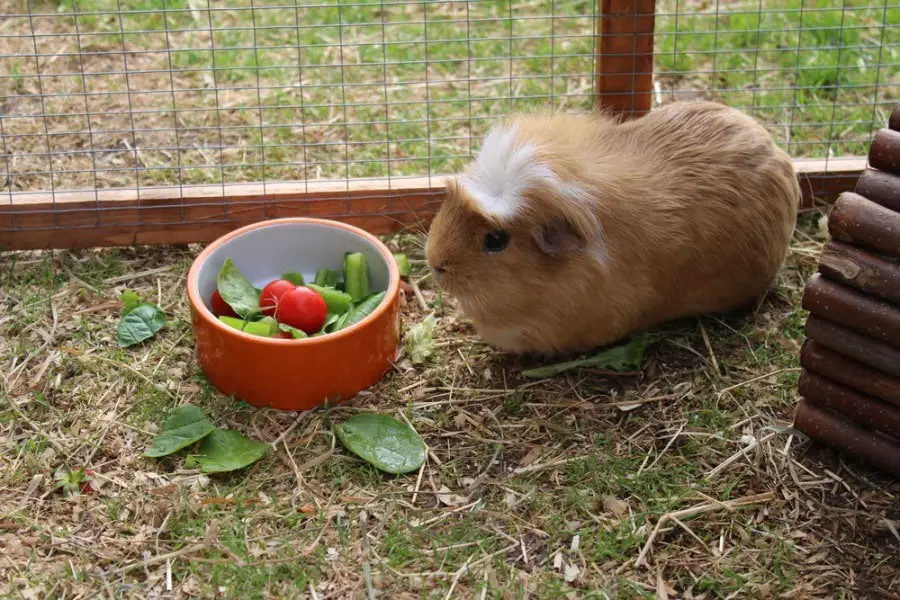
Conclusion
Radishes can be a part of your guinea pig’s diet, but they should be fed in moderation and with careful consideration. While radishes are generally safe for guinea pigs to consume, their strong and somewhat spicy flavor may not be well-received by all guinea pigs. Some may enjoy the occasional nibble, while others may prefer other vegetables that are milder in taste.
It’s important to remember that guinea pigs have specific dietary requirements, with a primary focus on hay and fresh, leafy greens. Radishes should only be given as an occasional treat, not as a staple in their diet. Furthermore, when introducing radishes or any new food into your guinea pig’s diet, it’s crucial to monitor their reaction and watch for any signs of digestive issues or allergies. If you notice any adverse reactions, it’s best to discontinue feeding radishes and consult with a veterinarian for guidance on suitable alternatives.
In essence, while guinea pigs can eat radishes in small quantities as an occasional treat, their diet should primarily consist of hay, fresh leafy greens, and other vegetables that are better suited to meet their nutritional needs. As responsible pet owners, it’s our duty to provide them with a balanced and healthy diet that promotes their well-being and ensures they lead happy and healthy lives.


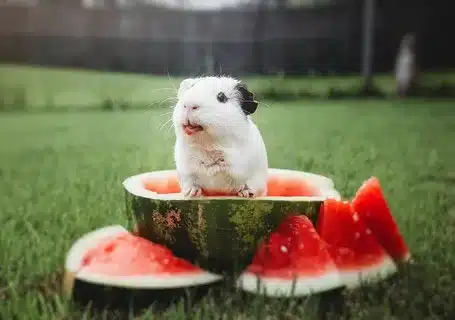
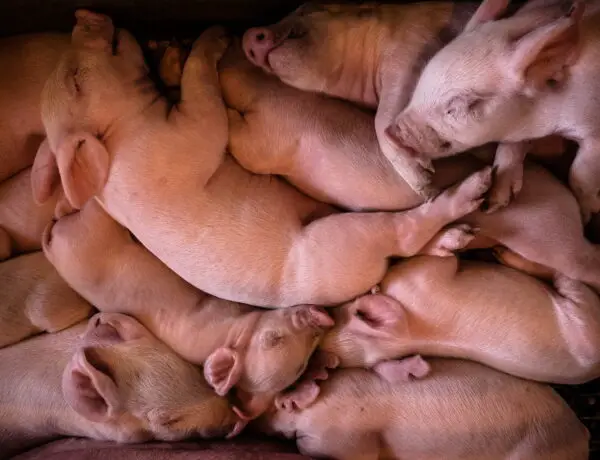
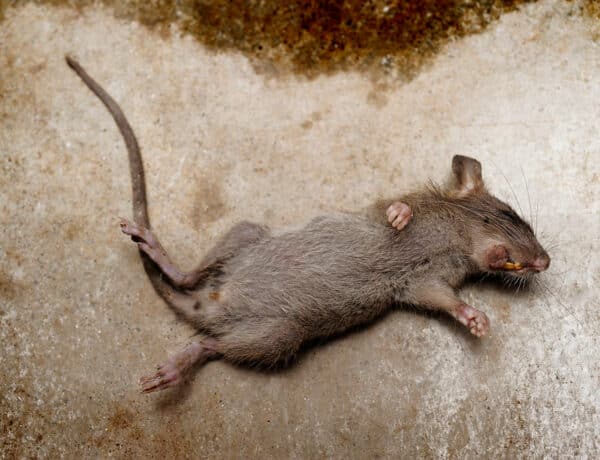
No Comments